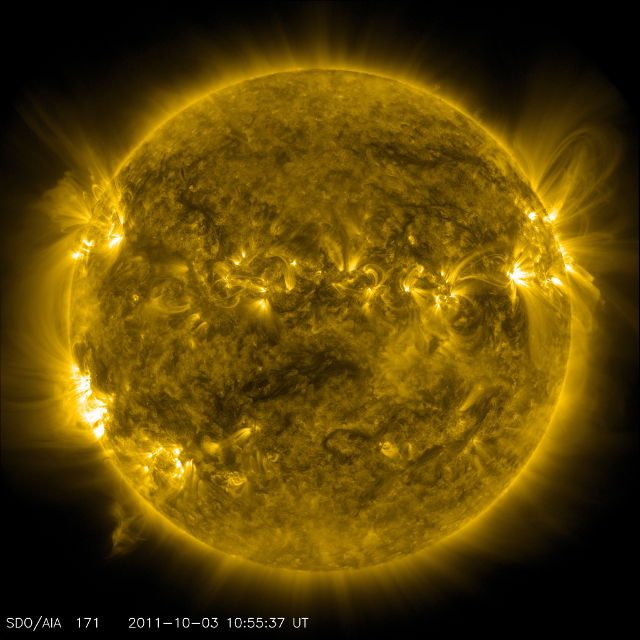SUMMARY
This is AI generated summarization, which may have errors. For context, always refer to the full article.

PARIS, France – A “twisted rope” of magnetically-charged energy precedes solar storms that have the potential to damage satellites and electricity grids, French scientists said on Wednesday, October 23.
A cord of magnetic flux emerges on the Sun’s surface, grows and is squeezed upwards – and the following day, the star unleashes a blast of radiation, high-energy particles and magnetized plasma.
Solar outbursts are considered a rare but increasingly worrisome risk for satellites, global positioning systems (GPS) and power grids on which modern life depends.
Reporting in the journal Nature, a team led by Tahar Amari of France’s National Centre for Scientific Research (CNRS) looked at a solar storm that brewed in December 2006 and happened to be observed by a Japanese scientific satellite.
“We were able to identify the source of the eruption four days before it developed,” Amari said in an email exchange with Agence France-Presse.
“The magnetic field builds up in the shape of a twisted rope. The ends of the rope are anchored in sunspots,” he said, referring to notoriously magnetized features on the solar surface.
Experts say solar storms can cause widespread breakdowns, disabling everything from power and radio to GPS geo-location and water supplies which rely on electrical pumps.
They begin with an explosion on the Sun’s surface, known as a solar flare, sending X-rays and extreme ultra-violet radiation towards Earth at light speed.
Hours later, energetic particles follow and these electrons and protons can electrify satellites and damage their electronics.
Next are coronal mass ejections (CME), billion-ton clouds of magnetized plasma that take a day or more to cross the Sun-Earth gap.
A solar storm in 1859 caused an electrical surge on telegraph lines that prompted some offices to catch fire and operators to receive shocks. A 1989 event caused power outages for five million people in the Canadian province of Quebec.
A 2009 report by a panel of scientists assembled by NASA warned that a catastrophic solar storm could cost the United States alone up to two trillion dollars (1.6 trillion euros) in repairs in the first year – and it could take up to 10 years to fully recover.
Predicting when these events will take place, and if Earth lies in their path, has been thwart with problems.
On July 23, 2012, Earth narrowly missed the biggest storm in 150 years, an event big enough to “knock modern civilization back to the 18th century,” yet few humans were even aware of the peril, NASA said last July.
At present, Earth gets a few hours’ warning of a solar eruption thanks to the eyes of orbiting US satellites.
But, said Amari, warning time should eventually improve.
“The work will help us fine tune knowledge about impending solar eruptions,” he said.
“Using real-time magnetic data and mathematical models, it will eventually be possible to predict space weather.” – Rappler.com
Add a comment
How does this make you feel?
There are no comments yet. Add your comment to start the conversation.